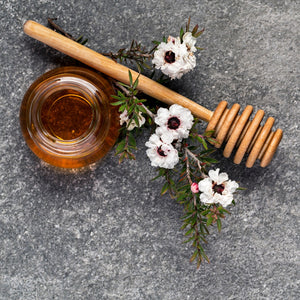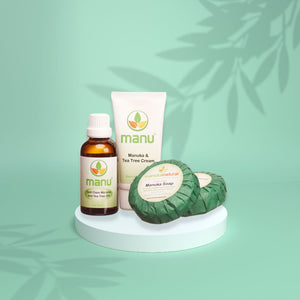
Reducing Free Radicals Will Help Your Beautiful Complexion.
Why You Must Experience Bee Venom Face Mask At Least Once Before you Turn 40
Does a bee venom face mask
tighten skin? Should I try what my friend is doing? I look old today…
When you hit 40, it seems like people are constantly telling you that you’re
“officially” old. And with that comes the pressure to start doing things to
take care of yourself and look young again. I don’t know about you, but many
ladies don’t want to spend their days slathering fruits and cucumbers all over
their faces!
So if you’re feeling a little panicked about getting older, don’t worry – you’re not alone. But don’t fret too much – there are plenty of things you can do to take care of yourself and look your best.
Why do we lose beauty as we age?
As the largest organ in the human body, the skin undergoes an aging process like all the other organs. Both innate and external factors contribute to skin aging via collagen change.
With constant sun exposure (especially to UV rays), which is the dominant external aging cause, the passage of time is the main inherent factor.
Let us explain that a little bit more.
Skin changes show because of epidermal thinning, aging abnormality of keratinocytes (the primary part of skin cells), and collagen degradation.
And all that happens because certain enzymes decompose collagen and gelatin. Therefore reduction of collagen production subsequently causes the decrease of skin elasticity.
It also reduces the cells in connective tissue, which produces collagen, giving you wrinkles.
But why is this happening?
The answer lies in the formation of free radicals, which is the leading cause of cellular damage.
Free radicals can cause oxidative skin stress leading to premature skin aging.
This article explains what free radicals are and what they do to your skin, as well as the steps you can take to neutralize them and maintain youthful skin.
What are free radicals?
Free radicals are highly reactive oxygen molecules: products of biochemical reactions in the body.
Our bodies depend on oxygen, but normal bodily functions sometimes divide paired oxygen molecules into two individual atoms with unpaired electrons.
These unpaired electrons search the body for another electron to form a stable pair, which is why they are defined as reactive. While doing this, they damage cell membranes, proteins, and DNA.
What causes free radicals?
Although free radicals are a natural product of the processes in the body, several external factors are known to cause and increase the production of free radicals.
However, many of these factors you can control.
FREE RADICALS AND THE SUN
UVA and HEVIS light are known to create free radicals. The sun, in moderation, is good for our skin and body. But excessive exposure to UVA rays is one of the primary triggers.
Oxidative stress caused by the sun leads to DNA damage and conditions such as photoaging (premature skin aging caused by the sun) and hyperpigmentation.
In addition to sunlight, other aspects of our environment can also trigger free radicals. For example, many of us live in cities where dirt and pollution are an unavoidable part of life. Pollution can worsen the effects of sun exposure and accelerate oxidative stress.
FREE RADICALS AND NUTRITION
Some will not like to hear this, but too much alcohol can trigger free radicals. Nutrition is crucial to overall health, and our food and drink choices can affect the production of free radicals in our bodies.
Some of the worst products in terms of free radical production are roasted or processed meat, food fried in a deep fryer or anything with a high content of saturated fats and alcohol.
Why are free radicals harmful to the skin?
Free radicals lead to oxidative stress, which over time affects the skin’s structure and causes premature skin aging.
Have you ever bitten a banana or an apple and then left it standing in the air? The brown color that appears results from oxidation caused by free radicals.
A similar process occurs in our skin, only over decades, not minutes.
The body uses antioxidants to neutralize potentially harmful free radicals. Still, when there is an imbalance between the production of free radicals and the body’s ability to neutralize them, free radicals begin to damage cell membranes, proteins, and DNA through a process called oxidative stress.
Among the cells that suffer damage are those responsible for producing collagen, elastin, and hyaluronic acid, which give the skin its youthful appearance and firm structure (e.g., fibroblasts and keratinocytes).
These substances naturally decrease as we age, and oxidative stress accelerates this process.
While aging is an entirely natural process, oxidative stress can cause premature skin aging: the initial development of visible signs such as fine lines and wrinkles is possible. Also, the skin appears expressionless and tired prematurely.
In addition to premature aging, the skin’s ability to neutralize free radicals naturally declines, accelerating the skin’s aging process.
How can you reduce free radicals and help prevent skin damage?
A healthy lifestyle and a regular, proper skin care routine will help you reduce harmful free radicals, prevent premature skin aging, and delay the visible signs of aging.
A healthy, balanced diet rich in antioxidants will help fight free radicals. For example, green vegetables, citrus fruits, beans and legumes, nuts, and fatty fish are high in antioxidants.
Also, stop smoking, reduce alcohol intake and make sure you drink plenty of water to keep your skin hydrated.
Don’t spend too much time in the sun, use a suitable sunscreen, try to reduce stress, exercise, and get a good night’s sleep to maintain overall health as well as the health of your skin.
Oh, I know how this may sound to you, but staying beautiful costs time and making some restrictive decisions.
Bee venom face mask reduces free radical damage
If you’re already toeing the line with everything mentioned above, then there is something else that will bring you results.
Regular cleansing, hydration, and the use of powerful, proven skincare ingredients with antioxidants such as Vitamin C, Manuka honey, and bee venom will help you maintain youthful-looking skin longer.
Or improve the existing one.
The sooner you start caring for your skin, the easier it will be to prevent it from aging prematurely.
As we age, the skin needs change, and bee venom products should respond to changing needs.
The Manuka Natural’s anti-age family includes three comprehensive lines specially formulated and clinically and dermatologically proven to provide the skin with the care it needs at every stage of the aging process.
One of them is Luxury Lifting Face Mask.
What does a bee venom face mask do to your face?
Bee venom face mask reduces the caused damage by making your body response more efficient. In addition, it restores the cell damage and production of collagen. With a bee venom face mask, you’ll experience improved facial wrinkles by decreasing total wrinkle area, count, and average wrinkle depth.
Our Bee Venom Face Mask has been specially formulated to be potent and age-defying. It includes our superior UMF™ Manuka Honey, as well as supercharged bioactive Sea Mayweed extract!
Luxury Lifting Face Mask is rich in high content of antioxidants that neutralize free radicals. If we consider this, the product is excellent in protecting the skin from harmful aging and external influences.
How do you use a bee venom face mask?
The cream is suitable for all skin types, as well as for all ages ( anti-wrinkle cream for 25+, 35+, and after 50 ).
Natural anti-wrinkle cream with bee venom “Luxury Lifting Face Mask” can be used both as a cream and as a mask.
If used as a cream: apply a thin layer of cream evenly on the neck and face in the morning and evening, gently massaging for 1-2 minutes.
If used as a mask: apply a thicker layer of cream on the face and neck, massage, and allow the cream to act for 20 minutes, then rinse off with tepid water.
This bee venom face mask glides smoothly and leaves the skin feeling moisturized after applying.
You can use it every day, and after about two weeks of use, you’ll already notice changes. For example, creases around the eyes and mouth are less noticeable, and some people will start to wonder how fresh you look now.
The scent is unique but pleasant.
Is it safe for me to use a bee venom face mask long-term?
Long-term treatment with bee venom-containing cosmetics is safe because the potential irritation of bee venom is negligible.
REPORT: Beneficial effects of bee venom on wrinkles
PLEASE NOTE:
This product MUST NOT be used by ladies who are allergic to bee stings.
You can perform a hypersensitivity test as follows:
Apply a small amount of cream on the skin of the forearm. If severe redness does not appear within 20 minutes, you can continue to use the cream.
Stop using the cream if you have an allergic reaction or discomfort.
In the end …
Today’s post, I would like to end with a quote from Coco Chanel:
“Nature gives you the face you have at twenty; it is up to you to merit the face you have at fifty.”
ORIGINALLY PUBLISHED on blog.manukanatural.com



Leave a comment